The Feud: The Hatfields and McCoys: The True Story Read online
Page 13
Three more shots rang out.
“Go home and tell mother that Wade Counts has killed me,” Nathan told Joel. Then he shouted, “Wade Counts, you have killed me. Don’t kill my boy…”
Pierce Skean pulled father and son apart and held Nathan’s arms behind his back as Joel ran for home. Joe Skean, the infamous colt-throat-slitter, struck Nathan in the temple with the butt of a rifle to settle that old score. Nathan fell to his knees. Then Kiser and Cain Counts smashed his head with rocks, and they all left him to die.
Dan Cunningham called them “heartless demons.”
The trial of Wade Counts and Joe Kiser in Judge Starcher’s court at Kentuck was a farce. The day after the murder, Cunningham, by this time a schoolteacher, had investigated the ambush site. Behind the boulder where the gang had hidden, he had found apples and tracks. He picked up the apples and followed the tracks through the woods. They led to John Kiser’s place, where he found the tree the apples came from and signs of a recent gathering. The tracks continued to the Counts family farm, where the accused all swore they had spent the entire day deadening timber, girdling the bark with axes to stop the flow of sap and thus kill the large trees, a technique used in the Appalachians (especially by moonshiners preparing to plant corn) that left a grim landscape of dying trees. But when Cunningham went back to examine Counts’s place on the sly, he found no signs of recent deadening.
Among the eight witnesses Cunningham summoned to the trial, one had seen Joel Skean ride up the creek before the murder, and Nathan’s son Joel identified Pierce Skean as the man who pulled him away from his father. But when Cunningham went to discuss the case with county prosecutor V. S. Armstrong, a former Confederate Army officer, his evidence was ignored. Instead, Armstrong told him, “If we really try to convict those fellows, the Band will make a slaughterhouse of the county.”9
“Then there’s no help from the law?” Cunningham asked incredulously.
“Well, there’s other ways. You know a gun when you see one.”
The likelihood of prosecution became even slimmer when Judge Starcher saw fit to chastise Cunningham for being pushy and threatened to make him pay the witnesses’ expenses. After dismissing the charges, Starcher and Armstrong rode off with Counts and Kiser and other members of the Band.10
Cunningham was stunned by this injustice against his dead brother—who by the age of thirty-eight had not only fought for his country but served in public office for eighteen years. The Consolidated Band, which Cunningham referred to by many names, including the Regulators (a reference to the war’s rapacious home-front militias), had driven his father from his home, killed his brother, and bullied and robbed the citizens of Jackson County, a county shaped by his grandfather, who was its first high sheriff. Cunningham loathed the shady prosecutors and crooked judges who protected the Band either out of cowardice or for profit. Livid, he packed up his books and rode away, leaving Armstrong and the rest to think that they had defeated him.
Cunningham spent the next few years as an itinerant teacher but also followed his brother into law enforcement, training with pistol and rifle. At six feet tall and possessing a farm-strong, chiseled frame, he was powerful and cat-quick in a fight. He neither drank nor used tobacco in any form. In 1884, he was hired for the position of deputy U.S. marshal. He knew there was only one kind of justice, and that was justice by the book. “Cunningham is a one-ideaed man; a fighter of one weapon,” a reporter would later write. “A mission of revenge dominates his life, and his weapon is the law.” Some would dismiss him as “a revenuer,” since it was these deputy U.S. marshals who were called on to enforce bootlegging statutes for the Internal Revenue Service, but it was a job he took to. He would serve during the terms of three successive marshals.11
His wanderings took him east into Roane County, Devil Zeke Counts’s home turf, a place of wilderness and hardscrabble homesteads and mountaineers even more isolated than those in Jackson. Named for a state supreme court justice, Roane County had, ironically, become known for lawlessness and crooked officials. In the fall of 1884, some friends of Peter Cook, a constable murdered there, hired Cunningham, who had already earned a reputation for being shrewd and single-minded, to help solve the crime. Cook had been riding to the county courthouse through the woods near Big Sandy Creek on the day he was killed. It was an area, noted Cunningham, where “Secessionists lived,” which to him meant mayhem, even two decades after the end of the war. Two shots had been fired from a height of about thirty yards above the road, but Cook was hit with twelve slugs. Afterward, Cunningham would show that one of the weapons used was a musket loaded with multiple small slugs of lead.
Cook had been carrying evidence for a sensitive and racially explosive case involving a black man named George who had had a long courtship with a white woman whom Cunningham called only Disaway Ledsome’s girl. George had abandoned her and moved to Charleston, where he married another woman. The trouble started when he moved back to Big Sandy Creek with his new wife. An angry Ledsome and her sister, Lil Hall, decided to take revenge. One night when George and his wife went to a church meeting, the two women robbed their house and then burned it down. Cook later caught them with George’s possessions and arrested them.
Then things went from bad to worse. Prior to her trial, Ledsome married a man named Reynolds, and her father advised his new son-in-law and Lil’s husband, Curtis, that the only way to keep their wives from going to prison was to kill Cook.
The two men spent the night before the shooting at Hall’s father’s house. A neighbor was having a party that evening, and after dark, Reynolds and Hall stashed a musket and a revolver in a hollow tree near the neighbor’s place and then joined the party until late at night. In the morning, they passed by the neighbor’s unarmed and told him they were going out to find some missing hogs. After retrieving their weapons, they crossed the mountain and then lay in ambush all day. Around four o’clock, having just decided to give up and head home, they saw Cook coming. When he reached a point directly below them, Hall fired the musket and Reynolds the revolver. Cook fell, mortally wounded, staring with shock at his murderers and locking eyes with Reynolds as he died.
It was that stare that helped Cunningham convict the pair. It troubled Reynolds so much that one foggy day while he was chopping timber in a deep hollow, he saw Cook’s ghost sweeping toward him in the gloom. On the day of the trial, when Cunningham, who had pieced together the crime, grilled Reynolds, he broke down and confessed: “I even saw the whites of his eyes,” he lamented, “and that look haunts me in my sleep.”
IN THE SPRING OF 1886, Cunningham set out to tackle a Roane County crime spree. Abe Looney had operated a prosperous general store and post office for decades. He was a generous man, good to his eponymous town, Looneyville, and its people. Just across a ridge, two men had built a rival store. However, they soon found that competing against Looney and his legacy of goodwill was a losing battle. The two men, George Simmons and Mason Vandevender, hired some local scrappers to burn down Looney’s store.
Not long after the fire, a moonshiner out of jail on bail was murdered. Working as a farmhand twenty miles southwest of Looneyville, the moonshiner, Thomas Deskins, had been grubbing a field when the crack of a rifle broke the silence. In a split second, a lead slug passed right through him. Spouting blood, he stumbled toward a fence for cover, but his assailants caught him and beat him to death. When Cunningham snooped around the crime scene in June, he discovered gory evidence—stones stained with blood and matted hair. Still, he later recalled, “everything seemed shrouded in darkness.” On Henry’s Fork, thirty miles away, he questioned a man in whose face he detected signs of guilt, but he could not draw out a confession. Cunningham kept talking to people until he discovered that the day before the murder, the man, Eli Hambrick, and three others had been seen carrying rifles near the farm where Deskins was working, a place they had never been known to visit before. When a Kanawha County deputy sheriff stopped them, they claimed to be hunting fo
r stray cattle and asked him for directions.
Cunningham had the four men arrested, but at the hearing, no one could prove that they had committed the crime. Then Hambrick’s son, Lee, was arrested for setting fire to Looney’s store. Curiously enough, though he was from a poor family, the boy was defended by the town’s most influential and expensive attorneys. During the trial, Thomas Deskins’s widow admitted that the Hambricks had met at their home to plot the arson. On orders from his father, young Lee had torched the store while the other Hambricks made sure to have alibis. The boy, able at his job, earned $2.50, a can of oil, and a pair of boots. It turned out that George Simmons had paid for his attorneys.
Soon, Cunningham got the break he needed to close the case. One of Hambrick’s men was arrested for forgery. Sentenced to two years in prison, he broke down and confessed to Deskins’s murder and named his accomplices. Indicted in the federal court at Charleston for bootlegging, Deskins had decided to use his knowledge of the Looney-store plot to get money out of Simmons and Vandevender. From jail, he wrote to the two merchants demanding the money. Simmons posted his bail but then hired Hambrick and the other three to kill him. For the murder, each man earned fifty dollars and some flour and bacon.
While Cunningham was successful in Roane County, he also became profoundly aware of how deeply malice ran in some families, how marital ties extended the web of outlawry, and how easily the legal system could be co-opted, not to mention just how paltry was the value of a man’s life.
He had seen with his own eyes that pockets of Rebels continued to commit violence and crime, and he attributed quasi-military status to these outlaw clans that surrounded him. But he had also seen how persistence in detective work paid off and how weak a criminal was once he was isolated from his gang and confronted with a prison term. You tore a gang down one man at a time. These were lessons he would carry with him into the Hatfield-McCoy feud.12
Chapter 11
A Double Whipping
1886
By 1885, so much valuable timber was flowing down the Big Sandy to the sawmills at Catlettsburg and so much related trade was being conducted there that the stockholders of its bank—the Catlettsburg National Bank—decided on a massive expansion. Even the great floods of 1883 and 1884, which laid waste to the city and required three months of cleanup and rebuilding each—the latter having wiped out three-quarters of the town—had not dampened the spirit of enterprise in the Gate City, as it was known. The town of three thousand people was well acquainted with devastation, which is perhaps why it now boasted seven churches, with another in the works. There had been other floods, in 1847 and 1875, and the business district had burned to the ground in 1878, requiring six months to rebuild it in Cincinnati brick. Another fire, in 1884, had burned a grocery store and several dry-goods wholesalers, killing four men. But construction materials flowed freely down the Ohio and the Big Sandy to the town, and its citizens put them to good use.
By 1886, the town’s timber business was worth more than a million dollars. Catlettsburg mills sawed and planed the logs into lumber, or timber traders dispatched the whole logs downstream to other markets. To keep up with the volume, steam-powered towboats were employed to drag the logs downriver.
Indeed, Catlettsburg was one of the busiest timber centers in the world, and its prospering bank duly erected a new building with stone and brick walls, stained-glass windows, and an ornate roof of the finest Pennsylvania slate, complete with dormers, chimneys, minarets, and spires. The entrance’s stone staircase was flanked by large bronze dragons. Inside, behind a carved wooden counter, a massive vault was partly visible, and a slew of bank officers and clerks busily worked at desks and money tables, counting stacks of greenbacks on their way in or out of the bank. The hallway could fit a hundred people. In addition to a boardroom, there were private chambers for discreet transactions. The bank—“equal to the finest buildings for similar purposes in the great cities of the country,” according to one local critic—was the pride of not only the town but the entire valley.
Another source of pride for Catlettsburg was its investment of twelve thousand dollars of its ample tax income in a fire engine and hose that were as good as any in the state, complete with a well-drilled team of firemen ready to extinguish any incendiary threat to the Gate City.1
Upriver in the Tug Valley, however, the pretensions remained considerably humbler.
SOMETIME IN THE SUMMER OF 1886, twenty-seven-year-old Jeff McCoy, an older brother of Johnse Hatfield’s wife, Nancy, shot a man. Not that it surprised anyone. A son of the murdered Harmon, Jeff, like his three brothers, had a quarrelsome streak. Dirt poor, they wore the shame of their undeserved misfortune like a horsehair coat.
Certain families, as Dan Cunningham had divined, were predisposed to violence. The McCoy temper was legendary. Outwardly proud and sensitive to a fault, Jeff seemed to be in a fistfight every few months. (He and all of his siblings, three brothers and two sisters, would play some role in the feud.) A century later, modern science would discover that the family suffers from a rare hereditary condition now known as von Hippel–Lindau disease (or VHL). Those afflicted with it often have tumors on their adrenal glands that cause the excessive production of adrenaline and catecholamines, substances that trigger warrior, or fight-or-flight, reactions. Friends and adversaries alike are subjected to a hair-trigger temper. At times angry at the world, McCoy family members have described their inability to stand any kind of insult, experiencing rage that turns them red in the face and compels them to fight. Other symptoms include a racing heart, splitting headaches, and hand tremors. In the extreme, an individual with VHL can pass out from an overdose of wrath.2
This perhaps partly accounts for Randall’s coldheartedness to Roseanna, his inability to forget a slight, and his grating habit of harping on any perceived wrong. Tolbert, the instigator of the Election Day brawl, was considered tough and mean. Harmon’s son Lark got so angry that his mouth twitched wildly. Once, as his daughter Vicey was leaving the house after an argument, he was in such a state of fury that he shot her with his rifle, knocking her to the ground. When his wife ran off the porch hysterically shouting that he had killed her, he calmly replied that she was not dead. He had purposely shot her in the fat of the thigh.3
Proclivities for anger aside, Randall, who turned sixty in the fall of 1885, had plenty of real grief and concerns to keep him crotchety. Half a generation older than Devil Anse—his first child, Josephine, was born in 1848, whereas Devil Anse’s Johnse was born fourteen years later—he had, as tradition demanded, parceled out his property to his children as they wed. Jim and Floyd had both been married for more than two decades, and Randall eked out a living timbering and farming on less land than his rival. Tolbert, who had been prospering, was now gone from the picture. His business partner had managed to wrest away the lion’s share of their assets. While Sally had slowly recovered from the shocking loss of her sons, eventually Mary refused to leave her bed; she grew weak and died, most said of a broken heart. So now Randall and Sally had Mel and Cora to raise.
There was also a hidden casualty of the Election Day fight: young Bill McCoy. It was now clear to most people that Joe Davis’s positive identification of Bud had been wrong. In fact, Bud had fallen on his sword for his younger brother and best friend. The result was that Bill was essentially lost as well. He could not go out in public; if he did, he risked being killed by a Hatfield or arrested for his part in the murder of Ellison. Rumors circulated that Bill had grown increasingly distraught until he had gone mad, that he wandered in the woods, frequently visiting Bud’s grave to brood over his death and sleeping outside for days at a time. Finally, it was said, he fell ill, took to his bed, and died without much of a fight. This story, however, might have been a carefully orchestrated fabrication: Decades later, Squirrel Huntin’ Sam would reveal a twist in the narrative. “Bill McCoy,” he said, was living “now in Mossy Rock, Washington.”4
If the fate of his children were not enou
gh to make Randall McCoy a little edgy, then the fact that the Hatfields had placed a target on his back should have been. Still, despite being urged by his family and friends to leave Blackberry Creek and move farther from the West Virginia border to create a buffer between him and the Hatfields, he and Sally refused to go. This was the land of their ancestors, and no one was going to drive them out.
At this point, Cap was increasingly guiding the Hatfields regarding the McCoys. Whether this was planned or due to Devil Anse being too preoccupied with conducting his business to think about the McCoys is unclear. Devil Anse, who owned several thousand acres of timberland, was busy becoming one of the richest men on the West Virginia line. His brother Elias, who owned 650 acres of land, was also prospering and taking special care to educate his sons. A few years later, a reporter would call him “for a man of his class… very well-to-do” and “devoted to his children.” Elias could only shake his head when it came to Anse’s sons. “Anse he’s got some boys thet’s mighty mean,” he declared, saying that “Anse can’t do nothin’ with ’em,” but especially singling out Cap, who had been “trouble” from the start.5
Threats went back and forth through the grapevine, and even Squirrel Huntin’ Sam admitted that the McCoys exacerbated the situation. “McCoys were awful wicked in those days but in after years joined the church and were very modest,” he wrote. Still, “McCoys would talk and threaten. Then the news would be carried to the Hatfields. They would talk but not so much.”
“News bees… can cause a whole lot of trouble,” Sam added.6
But if the Hatfields talked less, others spoke for them. Rumors persisted that the Hatfields—believing that if they could get rid of Randall, no one would be able to pursue the charges against them—were planning to ambush him again. Since this was in fact their intention, the Hatfields suspected that there was a snitch in the family.

 A Sea of Words
A Sea of Words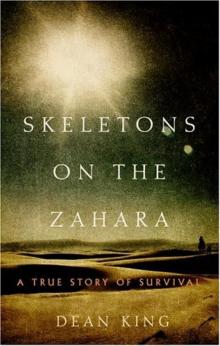 Skeletons on the Zahara
Skeletons on the Zahara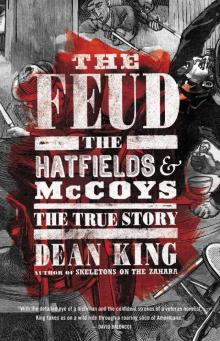 The Feud: The Hatfields and McCoys: The True Story
The Feud: The Hatfields and McCoys: The True Story Every Man Will Do His Duty
Every Man Will Do His Duty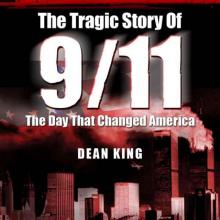 9/11...The Tragic Story of the Day that Changed America: The Terror, The Horror and The Heroes
9/11...The Tragic Story of the Day that Changed America: The Terror, The Horror and The Heroes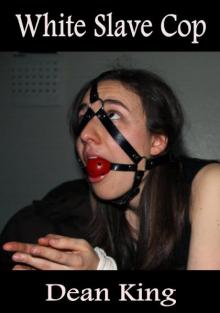 White Slave Cop
White Slave Cop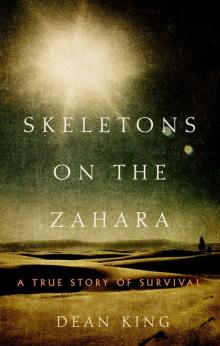 Skeletons on the Zahara: A True Story of Survival
Skeletons on the Zahara: A True Story of Survival